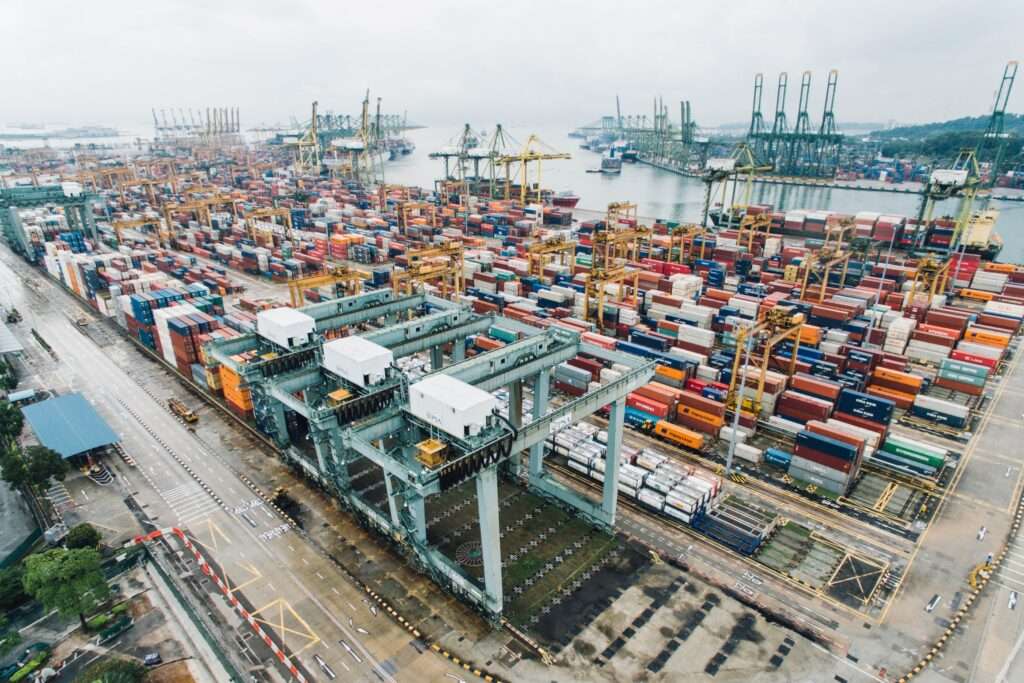In the realm of off-grid living, shipping containers have emerged as a popular solution for durable and sustainable housing. However, one often overlooked aspect of these repurposed structures is the height of their floors off the ground. In this article, I will examine the critical factor of how high the floor of a shipping container actually is from the ground, shedding light on this essential element for designers, builders, and individuals considering this innovative housing option. By delving into the specifics of shipping container design and construction, we can gain a comprehensive understanding of this fundamental dimension in the world of off-grid living.
The Basics of Shipping Containers
Introduction to shipping containers
Shipping containers are large, standardized metal boxes used for the transport and storage of goods. They are widely used in the global shipping industry and play a crucial role in international trade. These containers are built to withstand the rigors of transportation and provide a secure and efficient means of moving goods across long distances.
Standard dimensions of shipping containers
Shipping containers come in various sizes and dimensions, but they all adhere to certain standard measurements. The most common type of shipping container is the ISO container, which follows the specifications set by the International Organization for Standardization (ISO). ISO containers are available in different sizes, including 20 feet, 40 feet, and 45 feet in length. They usually have a width of 8 feet and a height of 8.5 feet. These standardized dimensions allow for easy stacking, handling, and transportation of containers on ships, trains, and trucks.
Features of shipping containers
Apart from their standard dimensions, shipping containers have several features that make them ideal for their intended purpose. They are made of strong, durable materials such as steel or aluminum, which can withstand the harsh conditions encountered during shipping, including extreme temperatures, saltwater exposure, and rough handling. The walls and roofs of these containers are reinforced to ensure that they can safely carry heavy loads and resist deformation. Additionally, shipping containers are typically equipped with doors at one end, allowing for easy access when loading and unloading cargo.
Floor Height in Shipping Containers
Understanding the floor height
The floor height of a shipping container refers to the distance between the ground and the interior floor of the container. It is an important consideration when utilizing shipping containers for various purposes, such as storage, housing, or business establishments. The floor height determines the accessibility, usability, and structural stability of the container, making it a crucial factor in the overall design and functionality.
Importance of floor height
The floor height of a shipping container is of paramount importance for several reasons. Firstly, it determines the ease of access and usability of the container. A suitable floor height allows individuals to enter and move around the container comfortably. Secondly, it directly affects the loading and unloading process, as a lower floor height makes it easier to load and unload goods. Lastly, the floor height plays a crucial role in the structural stability of the container, as it impacts the distribution of weight and the ability to stack multiple containers.
Factors influencing floor height
Several factors influence the floor height in shipping containers. Firstly, the type and size of the container play a significant role. Different container types, such as standard containers, high cube containers, open-top containers, and flat rack containers, have varying floor heights to accommodate their specific design features. Secondly, the purpose of the container affects the floor height requirement. Containers used for storage may have different floor heights compared to those intended for residential or commercial use. Furthermore, modifications and customization of containers, such as adding insulation or raised flooring, can alter the floor height. Lastly, the foundation and stacking arrangements of containers also contribute to determining the ideal floor height.

Standard Floor Height in Shipping Containers
ISO container standards
ISO container standards provide guidelines and specifications for the construction and dimensions of shipping containers. These standards ensure interoperability and compatibility between containers from different manufacturers and enable efficient global shipping operations. While ISO container standards do not explicitly dictate the floor height, they set the basis for the overall dimensions and weight capacities of containers, indirectly influencing the floor height measurements.
Typical floor height measurements
In general, the floor height in standard ISO containers is approximately 8 inches (20 centimeters). This measurement allows for sufficient space for ventilation, insulation, and the integration of structural supports. It enables easy access for individuals and facilitates the loading and unloading of goods. However, it is essential to note that there may be slight variations in floor height measurements depending on the specific container type, manufacturer, or modifications applied.
Variations in floor height
While the standard floor height in shipping containers is around 8 inches, variations can occur due to different container types and modifications. High cube containers, for example, are taller than standard containers, providing additional vertical space. As a result, the floor height in high cube containers may be slightly higher to maintain the desired overall dimensions. Open-top containers and flat rack containers, on the other hand, may have adjustable or removable flooring options, allowing for versatile cargo loading and unloading scenarios.
The Importance of Floor Height
Accessibility and usability
The floor height of a shipping container directly affects its accessibility and usability. A suitable floor height ensures that individuals can easily enter and move around the container. Whether the container is used for storage, housing, or other purposes, a comfortable and accessible interior is crucial for maximizing functionality. The floor height determines how easily people can stand, walk, and perform daily activities within the container while maintaining adequate headroom.
Cargo loading and unloading
Efficient loading and unloading of cargo is a critical consideration in the transportation and storage of goods. The floor height of a shipping container significantly impacts this process. A lower floor height facilitates the loading and unloading of goods, as it reduces the vertical distance that needs to be traversed. This is particularly crucial when dealing with heavy or bulky items, as a lower floor height minimizes the effort required for handling and ensures the safety of both individuals and the cargo being transported.
Structural stability
The floor height of a shipping container contributes to its structural stability. By determining the height of the cargo area, the floor height affects the distribution of weight within the container. A well-designed floor height ensures that the load is evenly distributed, minimizing the risk of shifting cargo during transportation. Additionally, the floor height impacts the stacking arrangements of containers. Containers need to be stacked securely and safely, and a consistent floor height ensures proper alignment and stability when constructing multi-level container configurations.





